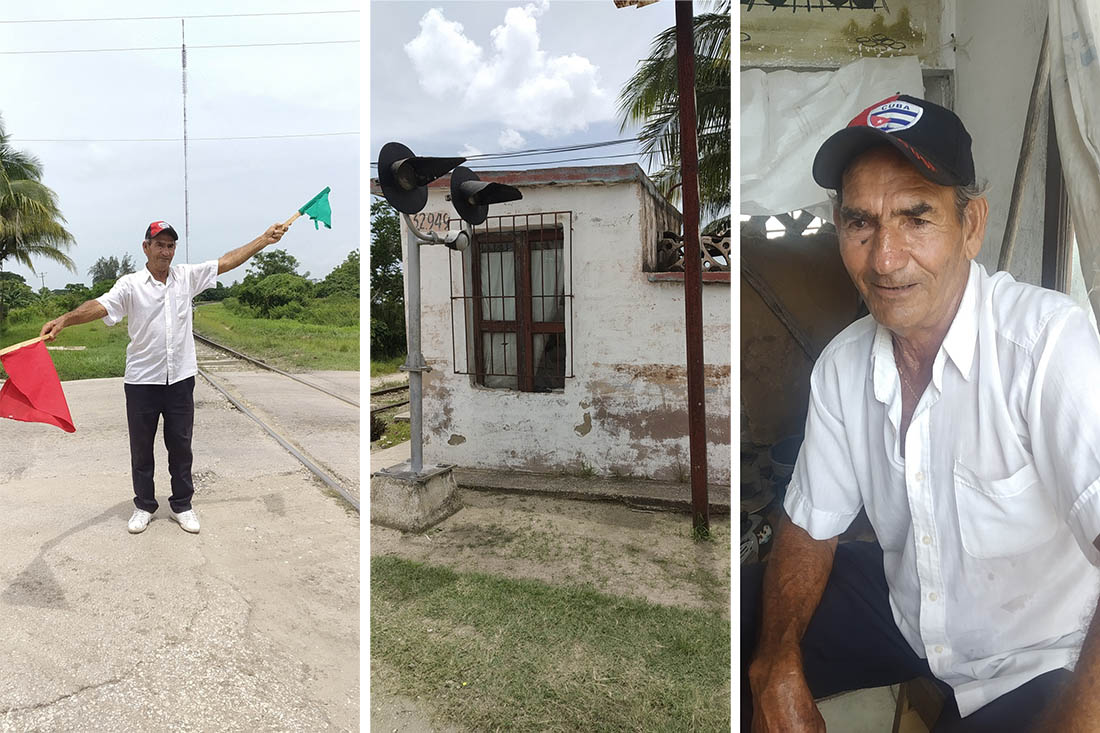There is a trade as old as its own guild, because with the railroad and its arrival in Camagüey in 1837, the gatekeeper or crossing guard emerged.
This work continues to this day, in various important places of the city, as lookouts for the railway, which protect its grazing passage and prevent car accidents.
The little publicized trade caught my attention when passing by the crossroads of the central eastern road, located at the 532,949 km, in the Jayamá neighborhood.
A battered booth houses the railway engineer, Martin Luis Alejo, who lovingly showed me the details of his day-to-day as a sentinel next to the railway line.
In the crossing
Its main function is to avoid accidents with the passage of the train, but it has other tasks, among them, being attentive if any car or wagon has a fallen ironwork or any defect that could undermine its good performance.
In these cases, it informs the central office through its radio plant and they, in turn, will give instructions to the engineer on board.
The signal works with electricity, when the train approaches 600 meters, the crossing guard activates a switch and the lights of the traffic light begin to flash and the alarm is activated.
Sounds and lights that during the day lose visuality and today there is no sound either, as the area has not electricity.
What to do in these cases
In the absence of electricity, the operator has two flags, one red and one green, with which manual signals are established: facing the locomotive, raise the green one so that the driver can see that the crossing is protected and continue traveling, while waving the red in front of the cars, to indicate the obligatory stop.
If it is night, the signals are made with flashlights, these are moved from top to bottom, until the locomotive emits two whistles, thus confirming that it received the message.
The responsibility and care of it are high, since a failure or delay in closing the crossing can cause an accident or derailment, with serious implications for the lives of the people involved.
In the past, the closure of the grazing crossing was marked with wooden barriers on both sides of the street, hence the name of the operator was guard-barriers, with the disappearance of the bars and only the traffic lights remain, the person in charge of that intersection was renamed crossing guard.
Alejo
Today’s guard was a train driver for more than 25 years, when he retired he wanted to continue linked to the railway family and on the Jayamá crossing he found a different way.
He is happy when he sees a passenger train go by, many drivers recognize him and greet him; he likes that he is still at home. He discovered his passion for the iron road when he was very young, when as a child he saw the steam engines go by and told himself that one day he would drive something like this.
His desire was far exceeded; Well, he says he has operated all kinds of machines, including steam machines, sugar mills and the most current ones, which work with diesel fuel and are of different models and nationalities. His constant improvement allowed him to go through the levels and steps, until he became Machinist-A.
Before closing
We have talked a lot about railways and the unique job of the crossing guard, to close the ideas Alejo wants to add something else… “the railroad bug” has never left my blood, it is part of my DNA: it is my life. Nostalgia and affection overwhelm him when he sees the trains go by every day and he assures that he does his job well to protect everyone, because he does it with infinite love.
Translated by: Aileen Álvarez García






